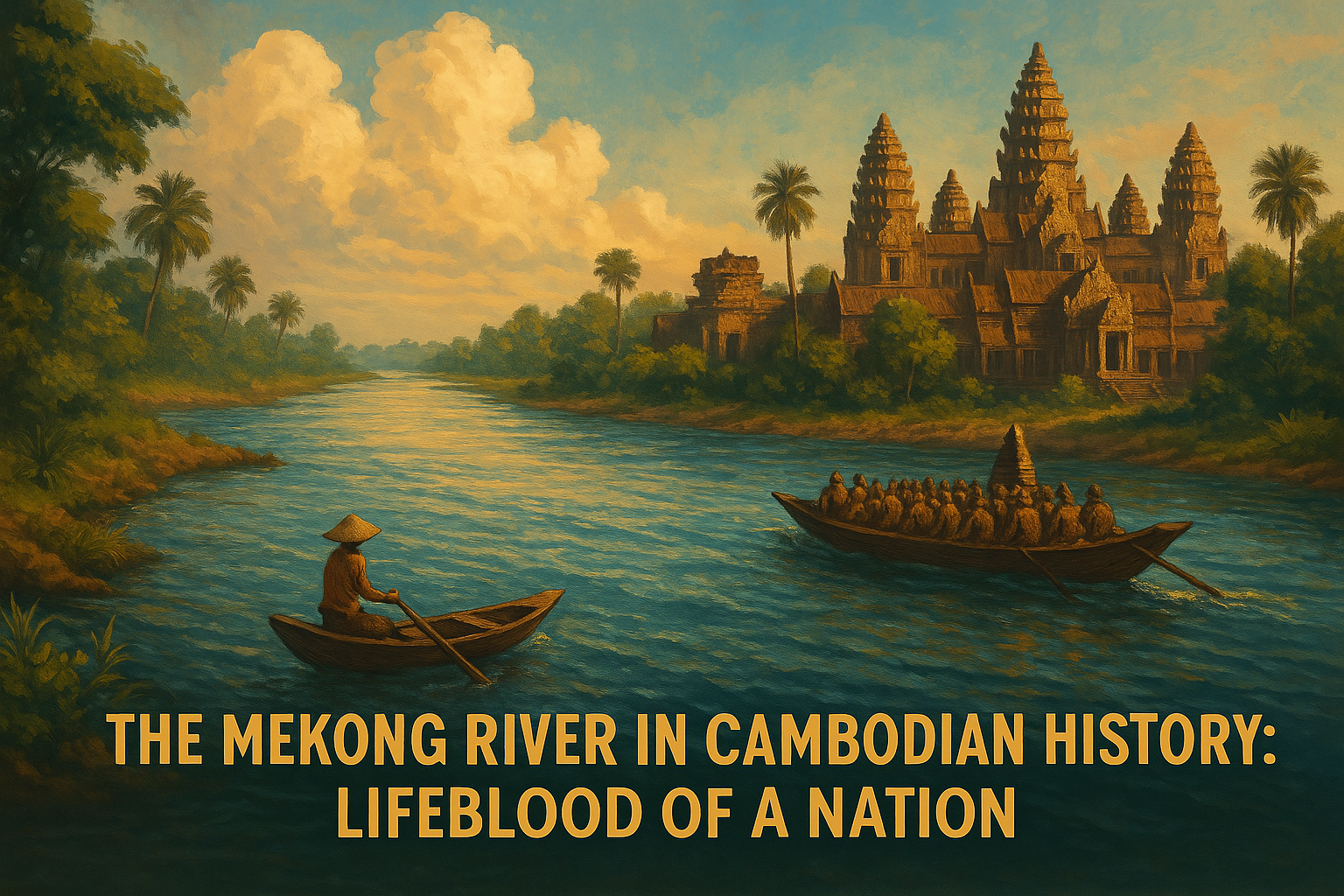Angkor Wat is more than a temple. It is the soul of Cambodia, the enduring symbol of Khmer ingenuity, faith, and resilience. Standing as the largest religious monument in the world, Angkor Wat captivates with its scale, precision, and beauty—drawing millions of visitors and scholars each year. But behind its iconic towers and intricately carved walls lies a deep and complex history shaped by religion, empire, war, and rediscovery.
This article explores the full arc of Angkor Wat’s journey—from its divine origins as a Hindu temple dedicated to Vishnu to its transformation into a Buddhist sanctuary, survival through centuries of conflict, and eventual recognition as a global heritage treasure.
Why Angkor Wat Was Built and Its Religious Significance
Angkor Wat was constructed in the early 12th century during the reign of King Suryavarman II (c. 1113–1150 CE), a powerful ruler of the Khmer Empire. The temple was designed to serve both as a state temple and as the king’s mausoleum, symbolizing his divine authority and eternal legacy.
Unlike earlier Khmer temples, which were typically dedicated to Shiva, Angkor Wat was built in honor of Vishnu, the Hindu god of preservation. This religious shift reflected not only personal devotion but also political symbolism. Vishnu, the protector of the universe, was a fitting patron for a king seeking to assert stability and cosmic order across his empire.
Angkor Wat was not merely a place of worship; it was a spiritual microcosm. Its layout reflects Hindu cosmology, with the central sanctuary representing Mount Meru, the mythical center of the universe. The temple’s concentric galleries and moats symbolize the surrounding mountain ranges and oceans, grounding the Khmer king at the heart of divine creation.
Hindu Origins of Angkor Wat and Its Dedication to Vishnu
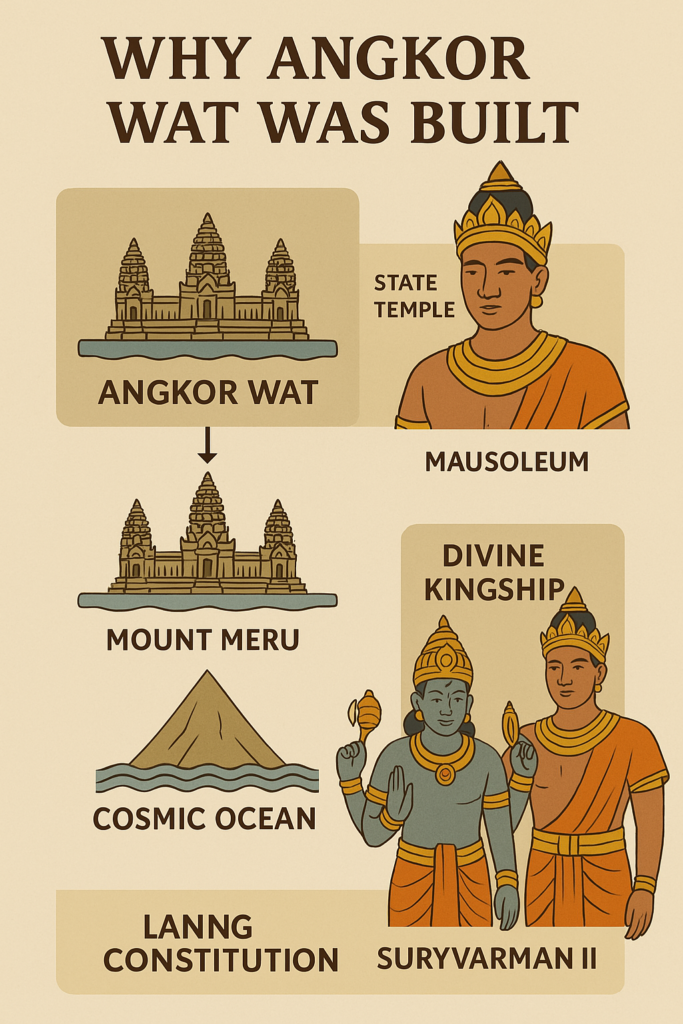
The religious foundation of Angkor Wat is unmistakably Hindu. The walls and pillars are richly adorned with bas-reliefs and devatas (celestial maidens) depicting stories from the Ramayana and Mahabharata, the two great Hindu epics.
Key features include:
- The Churning of the Ocean of Milk bas-relief: a vast and famous scene showing devas and asuras working together to extract the nectar of immortality.
- Vishnu in various forms, including as a cosmic being presiding over creation.
- A unique westward orientation: Unlike most Hindu temples, which face east, Angkor Wat faces west—traditionally associated with death and Vishnu—reinforcing its dual role as a temple and tomb.
Suryavarman II’s dedication to Vishnu marked a peak in Vishnuite worship in Khmer civilization, and the temple was meticulously planned to embody the spiritual essence and political power of the king’s reign.
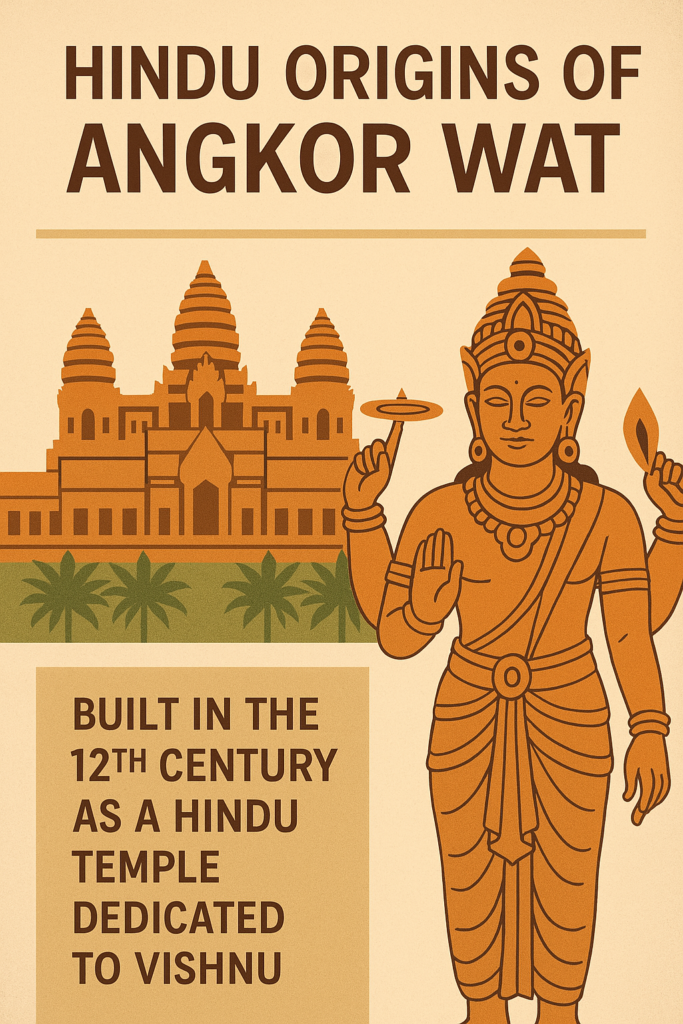
Transformation into a Buddhist Site in Later Centuries
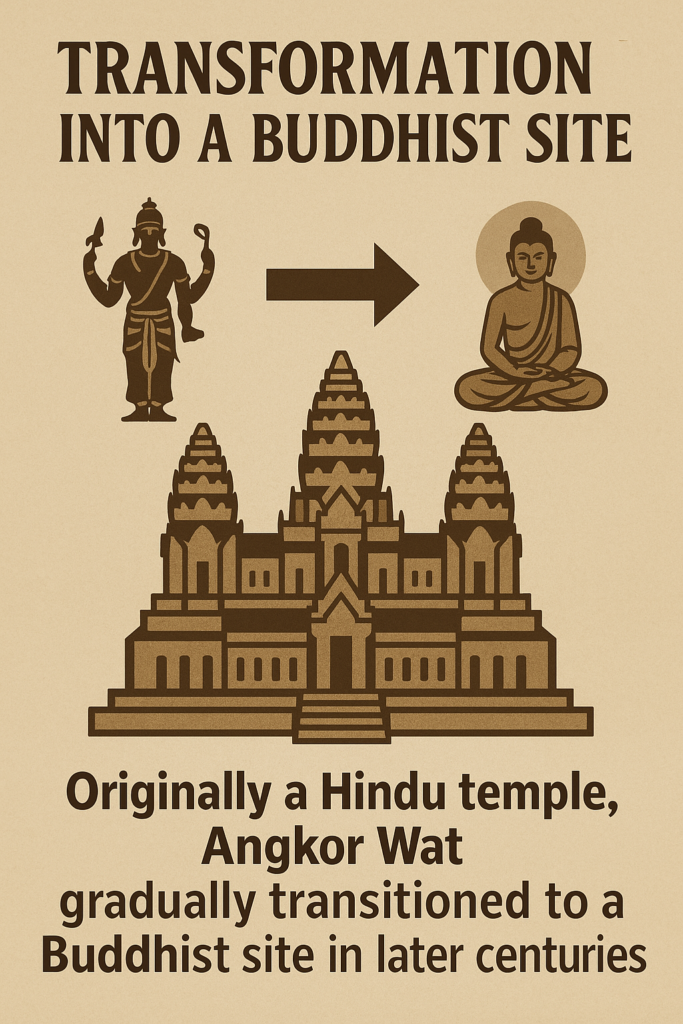
By the 13th century, the Khmer Empire began to embrace Theravāda Buddhism, and Angkor Wat gradually transformed from a Hindu temple into a Buddhist pilgrimage site. This transition was organic rather than destructive—many Hindu carvings were preserved, while new Buddha images were added to shrines and corridors.
This religious shift continued even after the fall of Angkor in the 15th century. Buddhist monks maintained the site, and Angkor Wat never fell entirely into disuse—a remarkable feat that distinguishes it from other ancient ruins in Asia.
Today, Angkor Wat stands as a living temple, still used for Buddhist rituals and veneration. It represents a rare continuity of sacred space across centuries of changing beliefs and regimes.
Architectural Marvels and Hidden Secrets of Angkor

Angkor Wat is an architectural masterpiece—a blend of artistry, mathematics, and engineering on a scale unmatched in medieval Southeast Asia.
Highlights include:
- Five central towers representing the peaks of Mount Meru.
- Nearly half a kilometer of bas-reliefs, depicting epic narratives and scenes of court life and battle.
- Precise alignment with the sun and moon, used to mark solstices and equinoxes.
- Massive sandstone blocks, some weighing several tons, transported from quarries over 50 kilometers away.
Recent technologies like LIDAR scanning have revealed hidden secrets beneath and around the temple:
- Underground foundations and drainage systems.
- Evidence of an extensive urban complex once surrounding Angkor Wat.
- Alignment with celestial events suggesting advanced astronomical knowledge.
The scale and precision of Angkor Wat continue to mystify scholars, hinting at a society far more sophisticated than previously understood.
How Angkor Wat Survived Wars and Invasions

Unlike many ancient monuments destroyed by war, Angkor Wat was never abandoned nor seriously damaged during Cambodia’s long history of invasions, civil wars, and colonialism.
Key factors in its survival:
- Its continued religious use by Theravāda Buddhists.
- Respect by foreign invaders, including Siamese and later French colonizers, who recognized its cultural value.
- Strategic isolation—its jungle surroundings protected it from total desecration.
Even during the devastating Khmer Rouge era (1975–1979), when many cultural sites were desecrated, Angkor Wat remained intact. It became a symbol of national resilience, pride, and spiritual identity for Cambodians during their darkest times.
Rediscovery of Angkor Wat by Western Explorers
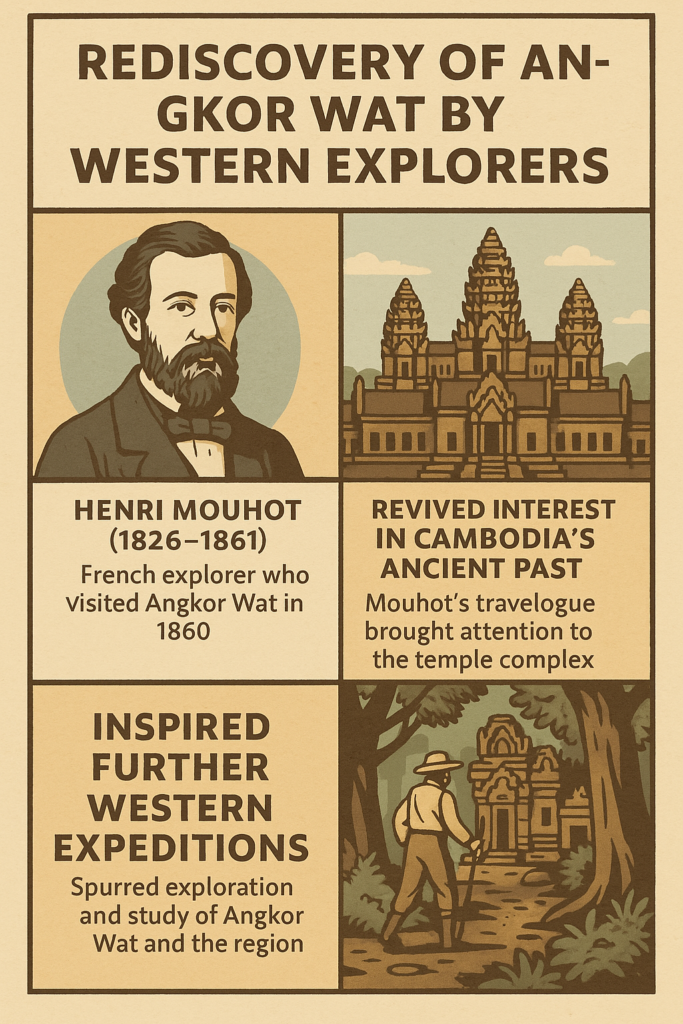
Although local Cambodians had never forgotten Angkor Wat, its existence was unknown to most of the outside world until the 19th century. In 1860, French naturalist and explorer Henri Mouhot visited the site and published vivid descriptions of the temple in Europe, sparking global fascination.
Mouhot famously wrote that Angkor rivaled the achievements of ancient Rome and Egypt. His writings, and those of other French scholars, led to:
- Increased European exploration of the region.
- The beginning of restoration efforts under the French École française d’Extrême-Orient (EFEO) in the early 20th century.
- International recognition of Cambodia’s ancient heritage.
While Mouhot did not “discover” Angkor Wat in the literal sense, his role in bringing it to the world’s attention cannot be understated.
Angkor Wat as a UNESCO World Heritage Site

In 1992, Angkor Wat was designated a UNESCO World Heritage Site, affirming its global significance as a cultural and architectural treasure. This status helped launch a new era of conservation, tourism, and research.
Today, Angkor Wat is:
- A national icon, featured on Cambodia’s flag and currency.
- A major tourist destination, drawing over 2 million visitors annually before the COVID-19 pandemic.
- The focus of ongoing restoration by international teams working to preserve its stonework, landscapes, and spiritual integrity.
UNESCO’s recognition also highlights the challenges facing Angkor Wat: overcrowding, environmental degradation, and the need for sustainable tourism. But thanks to global and local efforts, the temple remains both preserved and alive.
Conclusion: A Living Symbol of Cambodia
Angkor Wat is more than an ancient wonder. It is a living symbol of Cambodia’s past, present, and future. It tells a story of divine kingship, religious transformation, survival through adversity, and the enduring power of art and belief.
Whether approached as a spiritual sanctuary, a historical monument, or a cultural icon, Angkor Wat continues to captivate the world. In its stone carvings and silent corridors, we find echoes of a civilization that once dreamed of eternity—and in many ways, achieved it.


